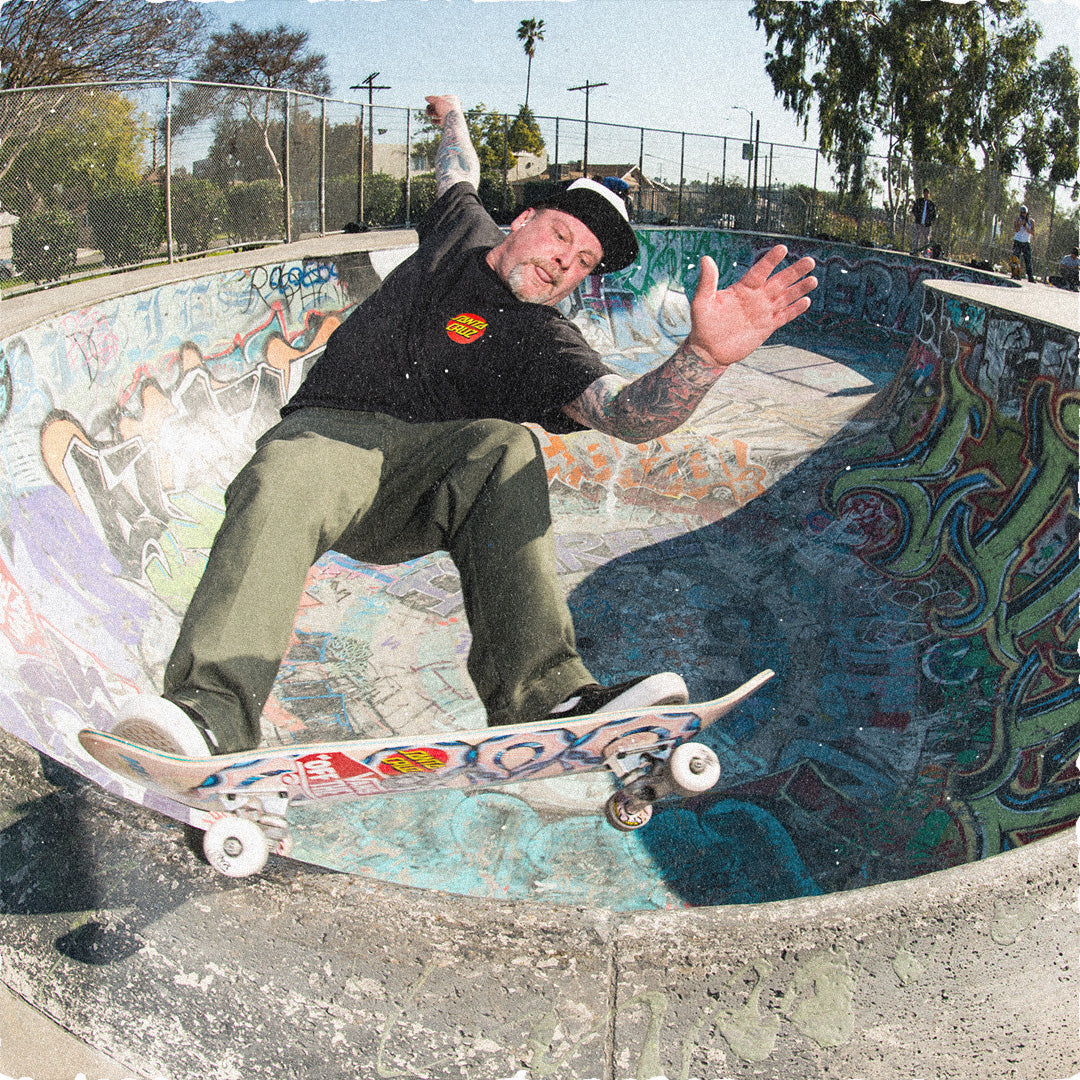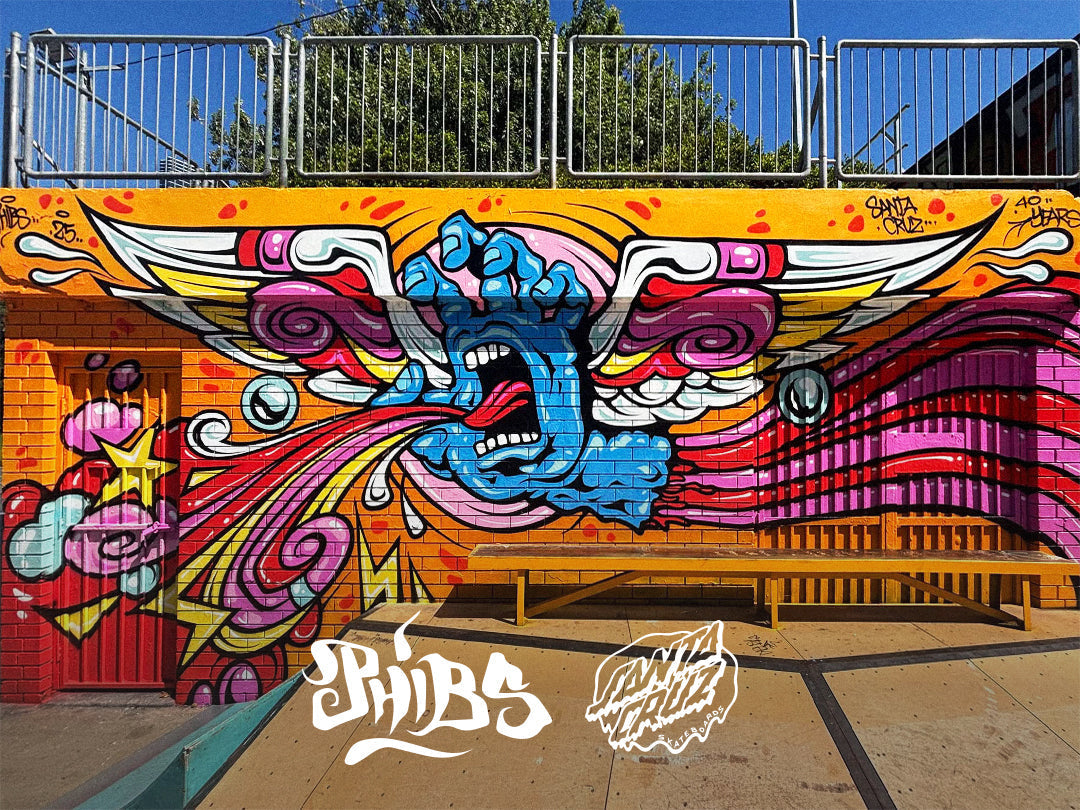
Some graphics just stick. You grow up seeing them on decks, walls, backs of hoodies. They become part of the background noise. The Screaming Hand, drawn by Jim Phillips in 1985 for Santa Cruz Skateboards, is one of those. It’s intense, slightly unhinged and unmistakably part of skateboarding’s visual DNA. This year marks 40 years since it first showed up. To mark the moment, Santa Cruz invited Phibs — a regular feature on the walls of Melbourne — to reimagine it. Phibs has been painting for decades. If you’ve walked through Fitzroy, Prahran, or anywhere with a half-decent alley wall, you’ve probably seen his work. His style is layered, organic and structured without being rigid.

We caught up with him down at Riverslide Skate Park, where he was painting his version of the Hand onto a wall in his signature layered, stylised approach. “I’m painting the iconic Screaming Hand,” he says, “but with a bit of a twist of Phibsy.” It’s not a total reinvention. The bones of Phillips’ design are still there—but Phibs has worked in what he calls his “curly pattern work,” along with wings and organic detailing. “It’s hard to change it too much,” he says, “but I’ve just sort of incorporated some elements of my style… a bit of a merge of the two.” His visual language has always been a mix. Early influences came from older graffiti writers in the ‘80s, but he also grew up around other kinds of art—Brett Whiteley, record cover designs, fantasy illustration.

“We had a link with family friends from Papua New Guinea and Indonesia,” he says. “They had this shadow puppet style of art—wayang kulit. I’ve always really loved masks. I guess it wasn’t just one thing. It was many things that inspired me.” There’s always been a connection between graffiti and skating. Even if Phibs didn’t fully take up a board himself, he understood the link early on. “I was interested in skating, but I never got into it,” he says. “I was more drawn to the graffiti. But definitely all those graphics—they got my attention.”

Both worlds thrive on reinterpreting space. “It’s about using your environment to be playful,” he says. “Whether it’s a graff writer hanging off the top of a building or a skater finding rails and steps—it's all about seeing things differently. Making something of it.” That perspective comes through in his version of the Hand. It doesn’t try to compete with the original, using his style, he’s let it grow into something else. “Like most kids, I’d seen all the different takes on the Hand over the years. So it was a pleasure to be asked. It’s good fun to take something and give it a new life.”



